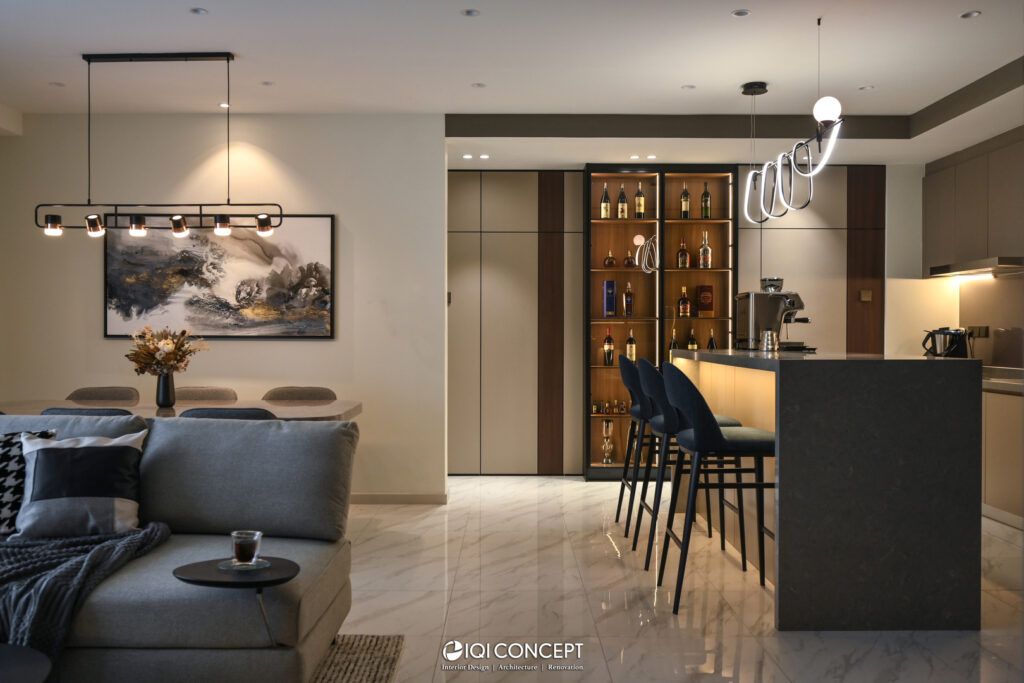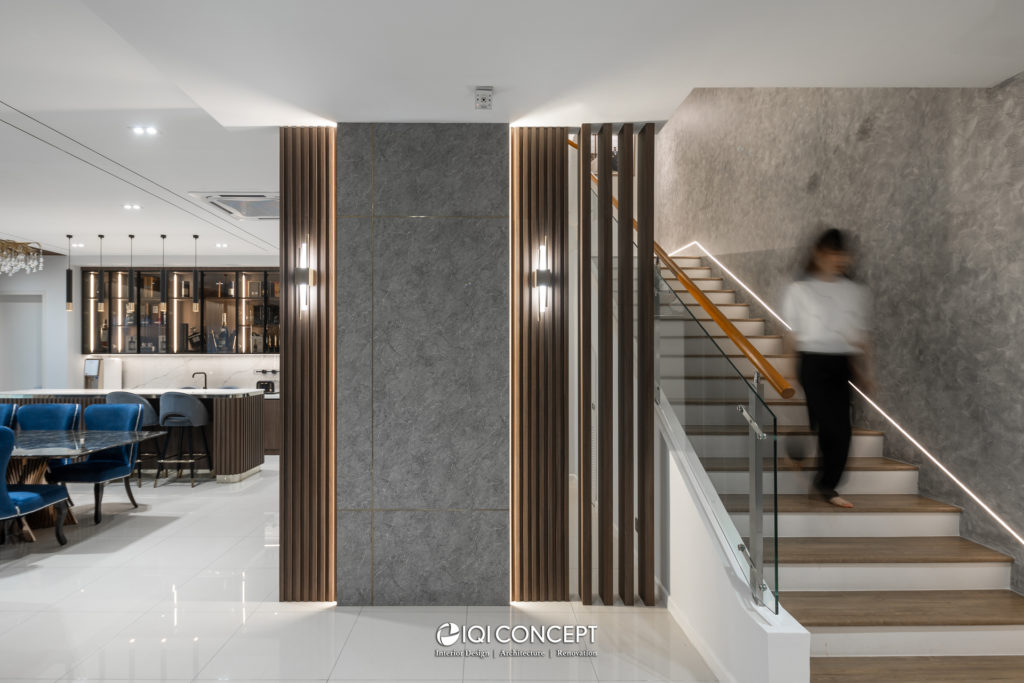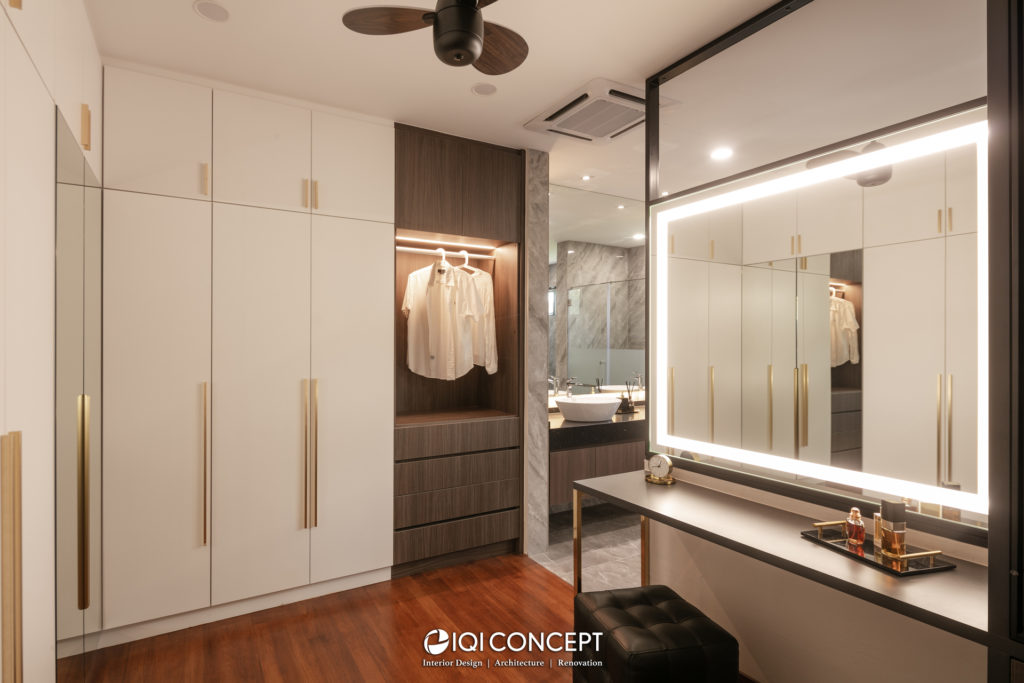6 Ways to Choose the Right Lighting for Your Home
The lights in your home are not just utilitarian but play a big part in the overall aesthetic and vibe. Get them right and you will elevate your interior design.
Many homeowners make the mistake of leaving lights till the very end of the design or furnishing process because they consider it merely a functional detail to illuminate spaces. Done right, lighting can add a lot of value to your home ambience and mood and in turn, those will influence your emotions too. Think about it: you reach home after a long day at work and having battled rush hour traffic. Would you prefer to step into a space that’s brightly lit with harsh white tubes or soft, warm glow of yellow bulbs?
You can determine the atmosphere in every part of your home by installing the right lights in the right space. Here’s how.

#1 Know the types of lights
There are three basic types of lighting for homes that serve different needs:
Ambient – The main source of light in a room, such as overhead fixtures and recessed
lights.
Task – These are not for entire rooms but just a small section to provide light for specific needs such as reading corners and vanity dressers.
Accent – More decorative than functional, these lights are meant to draw or focus attention to something you want to highlight within a given space. For example, a painting on the wall. They can also serve as the focal point in a space, such as a chandelier in the living room.
Pro tip You are not limited to just one type of light per space or room; you can – and should – layer on different types of lighting for the best effect and to cater to multiple needs.
#2 Think of the functionality
Now that you know what the different types of lighting are, the next thing to decide is what you need the lighting in each space for. Accent lights are best for the front of the home like the foyer, walkway, and living room as that’s where you would typically have more decorative elements. Highly utilitarian spaces like kitchens are best served by ambient lights to illuminate the entire area, while task lights can be applied as needed in the bedroom and home office.
Pro tip Get lights that come with dimmers so you can adjust the brightness according to times of the day or different needs.

#3 Measure the dimensions
Will it be bright enough for the intended space, or might it flood the room with too much light? Small and moveable lights like table lamps are not so much an issue as you can easily move them around in a room. However, for larger lights or permanent fixtures such as ceiling lamps and chandeliers, size is an important consideration so make sure you measure the dimensions of the room or space first. Here’s a simple calculation to determine the right chandelier size: add the width and length of the room in feet and convert the answer to inches. For example, for a room that measures 12 ft by 16 ft, the ideal chandelier diameter should be 28 (12 + 16) inches.
Pro tip Size aside, you should also take into account the visual “weight” of the chandelier. With a sleek silhouette and minimalist design, you can size up so that it gives the room more visual impact. If the design has more heavy elements, size it down so you don’t risk overpowering the room.
#4 Decide on the mood
Cosy and restful, bright and energetic, or well-lit and practical? As mentioned earlier, lighting plays a big part in determining the ambience of a room and that, in turn, affects your mood too when you spend time in that space. So go room by room and think of how you intend to use it and what mood you would want to be in when you’re in there. Bedrooms, for example, are mainly for resting so you should keep the main lights soft and calming. Home offices should utilise cool white lights as they make it easy to view computer screens and documents, while bathrooms would benefit from a combination of warm white light (ideal for shaving or applying make-up) and soft yellow lights (more flattering and inviting).
Pro tip Consider your usage of the room or space at different times of the day and even week. Let’s take your home office as an example; do you typically work late? While brighter lights are ideal for the day, you may want to go with warmer, softer bulbs for evenings. Also, consider specific task lighting such as monitor lamps to illuminate your computer screen.

#5 Think of practicalities too
There are areas of the house that serve multiple purposes and needs, and so the lighting needs to be versatile enough to reflect that too. The kitchen is mostly a functional space where you prep food, cook, bake, and clean so you want to make sure it’s generally well-lit. But in some households, the kitchen includes or segues into the dining area and the two are often treated as a joint space. It becomes a social hub too, where family and friends gather. In that case, you’d want a mixture of task lighting and some decorative, ambient lighting. The living room is another case in point – it’s where the family relaxes and catches up, and it’s also where you host guests. Again, a combination of lighting types would work best: overhead lights to create an inviting atmosphere, wall lamps or downlights to spotlight furniture or artwork, and table lamps for reading or downtime.
Pro tip Lights in your living room should be part of the interior decor too so go for decorative designs that complement the rest of the aesthetics. Add dimension or create talking points with striking lampshades, sculptural table lamps, or a vintage chandelier.
#6 Bring in natural light
Don’t just focus on artificial lighting; as much as possible, let sunlight stream in and bathe your interiors with an organic, natural vibe. It will infuse your space with a lively energy that helps lift moods and general well-being. Natural light works particularly well with soft, pastel colours and this applies to everything from wall paint to furnishing and even the floors.
Pro tip Maximise the amount of natural sunlight that floods your home by placing mirrors to reflect windows.
Follow our socials to get the latest updates!
Looking to transform your home? Click here to get a free consultation now!